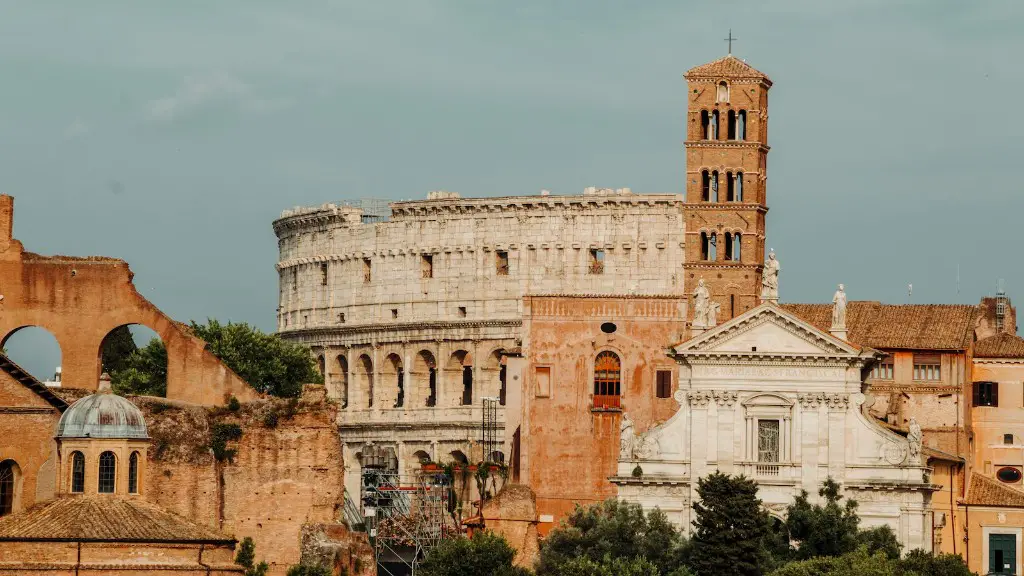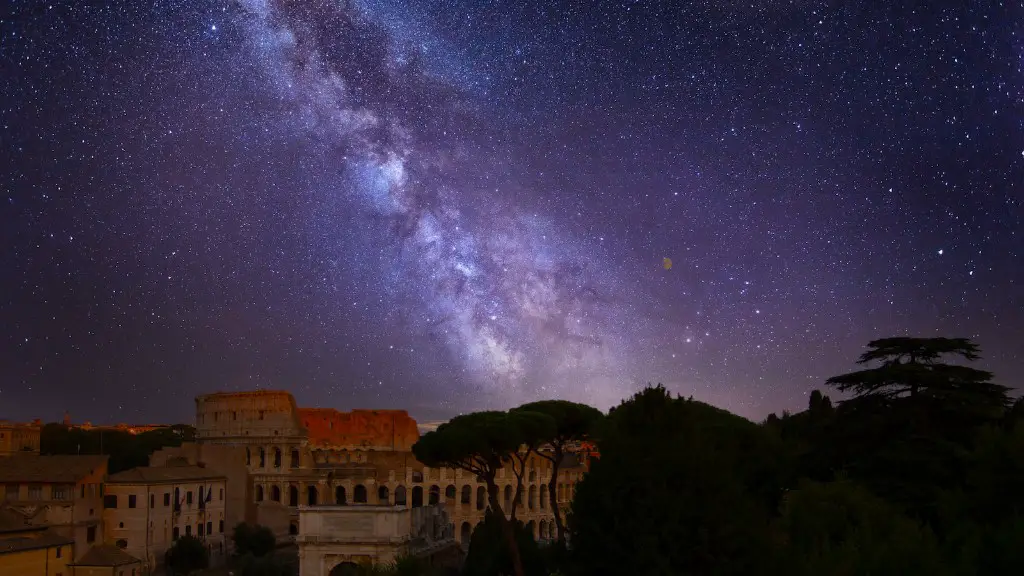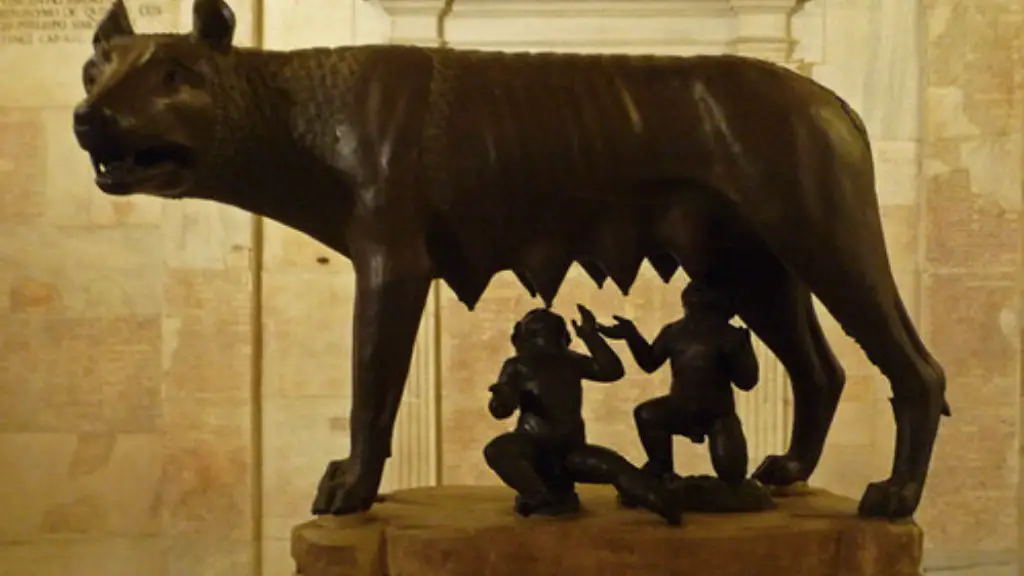The religion of ancient Rome is a complex subject, as Rome had no official state religion. The Roman religion was polytheistic, with hundreds of different gods and goddesses worshipped. Roman religion was also syncretic, meaning that elements of different religions were combined. Roman religion was influenced by the religions of the Greeks, Etruscans, and Egyptians. Roman religion also had a strong emphasis on ancestor worship.
The religion of ancient Rome was polytheistic and focused on the pantheon of Roman gods.
What was the ancient Roman religion called?
The Religio Romana was the major religion of the city in antiquity. The first gods held sacred by the Romans were Jupiter, the highest god, and Mars, the god of war and father of Rome’s twin founders, Romulus and Remus, according to tradition.
The First Council of Nicaea was convened in 325 by Emperor Constantine I, who wanted to unify the Christian Church and formulate its doctrine. The result of this council was the Nicene Creed, which laid out the agreed upon beliefs of the council. In 380 CE, the emperor Theodosius issued the Edict of Thessalonica, which made Christianity, specifically Nicene Christianity, the official religion of the Roman Empire. This council and the Creed it produced were important in shaping the future of Christianity.
What gods did Romans worship
The three most important gods in Roman religion were Jupiter, Juno, and Minerva. Jupiter was the protector of the state, Juno was the protector of women, and Minerva was the goddess of craft and wisdom. Other major gods included Mars (god of war), Mercury (god of trade and messenger of the gods), and Bacchus (god of grapes and wine production).
Paganism was a popular religion in the ancient world, but it died out in the early imperial era. Philosophy played a role in its demise, as it promoted rational thought and questioning of traditional beliefs. However, there are modern day Neo-Pagans who try to revive the religion.
Why did Romans fear Christianity?
Christians in the Roman Empire were persecuted for their refusal to worship the emperor and take part in sacrifice. This general dislike for Christians likely arose from their refusal to worship the gods, which was expected of those living in the Roman Empire.
The crucifixion of Jesus was a turning point for both the Romans and the Christians. To the Romans, Jesus was a troublemaker who had gotten what he deserved. However, to the Christians, Jesus was a martyr, and it was soon clear that the execution had made Judaea even more unstable. Pontius Pilate, the Roman governor of Judaea who ordered the crucifixion, was ordered home in disgrace. This event showed that the Romans were not to be trifled with, and that the Christians were willing to die for their beliefs.
Who is the main pagan god?
The most well-known gods in Norse mythology are Thor, Odin, Freyja, Frigg, Freyr, Tyr, Loki, and Heimdall. Each god has their own area of influence and their own unique personality. Odin is the god of wisdom and war, Thor is the god of thunder and battle, Freyja is the goddess of love and beauty, Frigg is the goddess of marriage and home, Freyr is the god of fertility and peace, Tyr is the god of justice and courage, Loki is the god of mischief and trickery, and Heimdall is the god of vigilance and protection.
These names are associated with some of the most terrible Roman emperors who were known for their cruelty, madness, and sexual perversion. They were also known for their absolute power and the ability to instill great fear in their subjects. These rulers were often considered tyrants, and their reigns were marked by bloodshed and chaos.
How many gods did Romans believe in
The Deii Consentes were the most important group of deities in the Roman pantheon. There were twelve gods and goddesses in this group: Jupiter and Juno, Neptune and Minerva, Mars and Venus, Apollo and Diana, Vulcan and Vesta, Mercury and Ceres. These deities were responsible for the various aspects of Roman life, and their worship was essential to the wellbeing of the community.
Jesus was a Jew and he was born of a Jewish mother in Galilee. All of his friends, associates, colleagues, disciples were Jews. He regularly worshipped in Jewish communal worship.
Did Rome fall from Christianity?
One of the many factors that contributed to the fall of the Roman Empire was the rise of a new religion, Christianity. The Christian religion, which was monotheistic (belief in one god), ran counter to the traditional Roman religion, which was polytheistic (belief in many gods). The Christian religion also preached equality of all people before God, which was in contrast to the Roman practice of slavery. Christian morality was also at odds with the Roman emphasis on pleasure and self-gratification. In the end, the Christian religion proved to be a more appealing and lasting belief system than the traditional Roman religion, and contributed to the decline and fall of the Roman Empire.
In 312 AD, the Roman emperor Constantine became a convert to Christianity, which led to a change in the Roman stance on religious persecution. Prior to Constantine’s conversion, the Romans had no qualms about persecuting people who refused to honor the traditional gods with sacrifices and rituals. However, after Constantine’s conversion, the Romans became more tolerant of different religions and began to allow freedom of worship.
Who founded Christianity
Christianity is centered around the teachings of Jesus Christ. Christ was a Jewish teacher and healer who lived in the first century AD. He proclaimed the imminent Kingdom of God, and was crucified in Jerusalem in the Roman province of Judea. Christianity began as a Jewish sect, but soon spread to other parts of the world.
Most Christians believe that Jesus was the incarnation of God the Son, and the awaited Messiah (the Christ) prophesied in the Hebrew Bible. They believe that he was born around 4 BC, and died around AD 30 or 33. The cause of his death is crucifixion, and he is known as the central figure of Christianity.
Who did the Romans fear the most?
Of all the groups who invaded the Roman Empire, the Huns were by far the most feared. Their superior fighting technique and lack of mercy caused thousands of people to flee west in the 5th century. The Huns were a powerful force and their invasion of the Roman Empire was a turning point in history.
Tiberius was the second Roman emperor, ruling from 14 AD to 37 AD. He was the son of Livia Drusilla and the stepson of Augustus. Augustus adopted Tiberius as his heir, and it was under Tiberius that the Roman Empire reached its greatest extent.
During his reign, Pontius Pilate was the governor of Judaea province, and it was during this time that Jesus of Nazareth was executed. The Gospels state that Jesus preached and was executed during the reign of Tiberius, by the authority of Pontius Pilate.
Warp Up
The official religion of ancient Rome was polytheistic, worshipping a pantheon of gods and goddesses. However, the Roman state also tolerated other religions, including Christianity.
The religion of ancient Rome was a polytheistic religion that believed in a pantheon of gods and goddesses. Rome’s religion was heavily influenced by the religion of the Etruscans and the Greeks. The Roman state religion was centered around the worship of Jupiter, Juno, and Minerva. Rome also had a large number of private religious cults that worshiped a variety of gods and goddesses.





